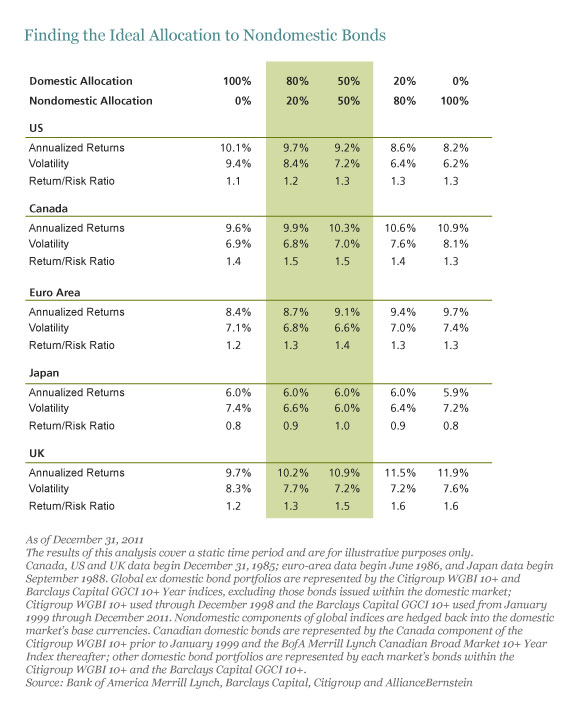Liability-driven investors can reap significant benefits from globalizing their long-duration bond portfolios, but how much should they sow? How large an allocation to nondomestic bonds is appropriate? Our research suggests that even a modest allocation can meaningfully improve an LDI portfolio’s risk-adjusted return potential.
As we examined in our previous blog, liability-driven investors have been slow to embrace global investing: traditionally, domestic bonds have been considered the best match for long-term liabilities such as pension obligations. However, an allocation to currency-hedged global bonds can help reduce downside risk while capturing most of the upside return potential of domestic bonds, creating an opportunity to improve a plan’s funded ratio.
The key question for liability-driven investors is how large this allocation to global bonds should be. Three of my colleagues—Alison Martier, Erin Bigley and Ivan Rudolph-Shabinsky—have recently published research that sheds some light on this question. Should liability-driven investors convert their entire fixed-income portfolios to global debt?
Our research suggests that the answer is no. There is generally a close correlation between returns for domestic-only long bonds and hedged global bonds, but the gap between the two can at times be quite large.
Over the past 25 years, the largest outperformance margin for domestic bonds over global bonds was 13.2% for a US dollar–based investor and 9.5% for a euro-based investor. However, the biggest gap for sterling- and yen-based investors was nearly 20%—and in the UK and Japan the correlation between domestic and global bond returns is lower. So where is the sweet spot that allows the liability-driven investor to capture the advantage of going global? To answer this question, we looked at various combinations of domestic and nondomestic bonds, as the display below shows.

Adding even 10% to 20% of nondomestic bonds significantly improves the risk-adjusted return potential of a portfolio. The incremental improvement in return/risk ratio from adding more nondomestic exposure generally diminishes after reaching a 50/50 blend, our research suggests.
The appropriate allocation, of course, varies depending on each investor’s risk tolerance and specific home country. For example, a sterling-based investor might find a larger exposure more attractive, whereas a yen-based investor might find a smaller exposure to global bonds appropriate. The key takeaway though, is that in these four regions, liability-driven investors can benefit from an allocation to global debt.
The views expressed herein do not constitute research, investment advice or trade recommendations and do not necessarily represent the views of all AllianceBernstein portfolio-management teams.